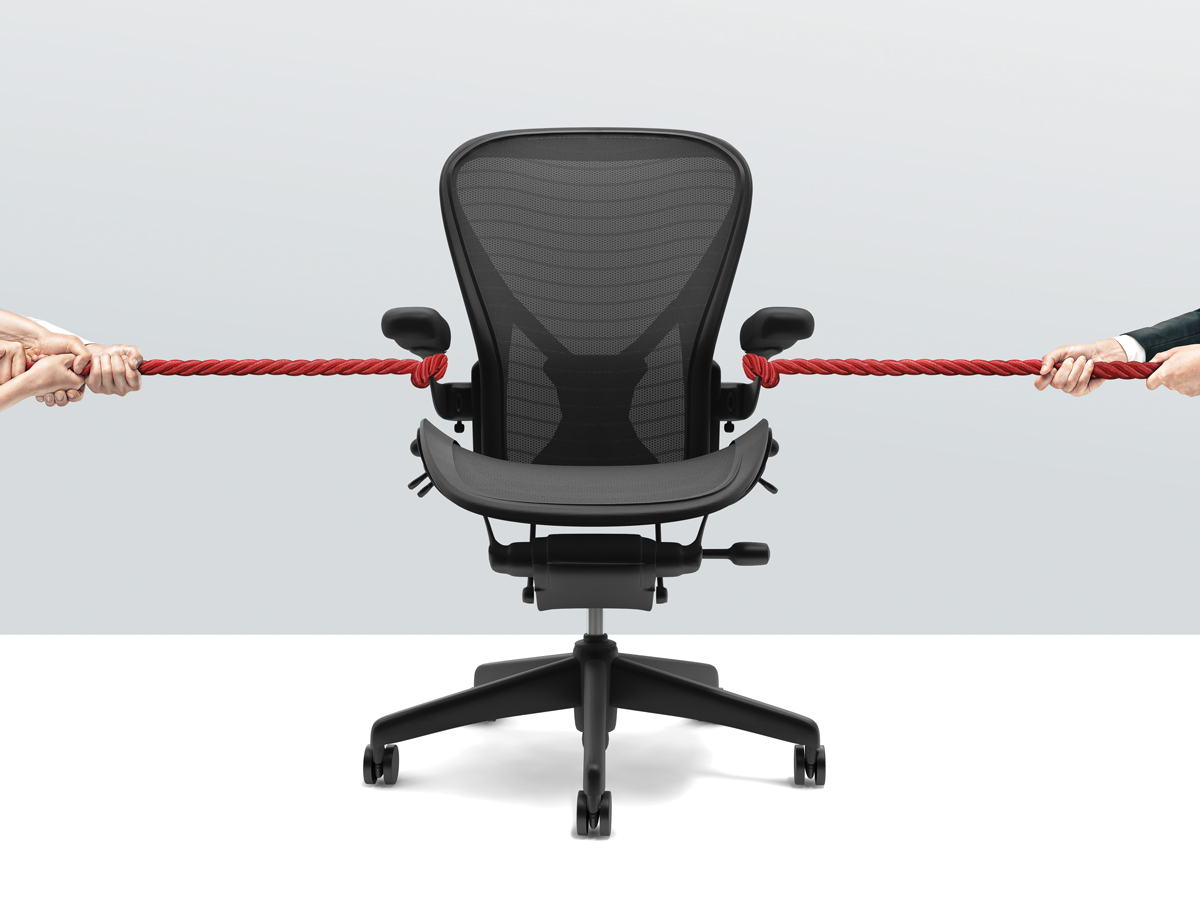
Home (vs.) office: is it really a return to business as usual?
 Not everyone agrees with the call for return to “normalcy” after three years of productive work-from-home scenarios (iStock)
Not everyone agrees with the call for return to “normalcy” after three years of productive work-from-home scenarios (iStock)
Stay-at-home orders across the country pushed businesses to realize that many of their employees could easily work from home. With over a quarter of Canadian employees doing just that at the start of 2021, a shift in company protocol helped with the changes. Online video conferences, shared online drives, cloud storage and emails quickly replaced face-to-face talks and in-person meetings.
As far as productivity goes, 90 per cent of employees reported completing at least as much work per hour at home as in the workplace, according to Stat Canada’s Labour Force Surveys. With most COVID-19 restrictions lifted or lifting, there’s a call for a return to “normalcy” from many companies and employers. But not everyone agrees with that call, especially after nearly three years of work-from-home scenarios that yielded the same, if not better, results. Seeing how much effort has been put into the home office in recent years, is it really time to erase all progress, or is there another solution?
Beyond a flexible schedule and your choice of attire, the biggest perk of working from home is an end to long and frustrating commutes for many. According to a survey from VMware Inc., a visualization and cloud computing company, of 1,500 employees, 75 per cent feel more energized and ready to work due to skipping their commute. Through the positive feelings of remote work, however, there’s a dark cloud hanging over these workers as the same survey also shows that only 40 per cent feel that return to office expectations have been clearly laid out to them by their employer.
Where some employers are hesitant to bring employees back to the office, others have brought down the hammer on the return to the nine-to-five, Monday-to-Friday routine. Elon Musk famously set a heavy-handed precedent in the spring of 2022, with a strict return to office policy for Tesla employees and demanding staff to stop “phoning it in.” Other companies have been warmer and more inviting. Deloitte Canada offered its staffers a hybrid setup combining some days at home and others at the office, with no plans yet to mandate a full return to the office.
A Deloitte press release on the topic best captures their approach in the matter: “Many questions and unknowns still remain around how to best evolve workforce functions, both onsite and remotely.” It continues, “[Leaders] should consider answering the core strategic questions…to ensure that reopening is not a step back, but a step toward further recovery.”
“Clients trying to figure out what their office should be for employees who want to be there, who don’t want to be there and hybrid workers”
It’s challenging, though, to navigate between company needs and an employee’s job satisfaction, especially when many employees seem willing to quit. In October 2022, a survey from Canadian financial technology company, Hardbacon showed that 80 per cent of teleworkers (people who have shifted to primarily working remotely) would choose to quit and find a new job rather than return to the office full time, with most citing the reason as the high cost of out-of-pocket expenses. Factoring in the costs of travel and food, the amount of money saved by working from home for most of the year can rise into the thousands.
Competing with the home office represents a huge hurdle for employers trying to convince remote workers to happily return to the office. But they do have one unique carrot to dangle in front of employees.
Aside from offering the option of a hybrid work schedule, many businesses are now using revamped spaces in an effort to lure their employees back to the office, while also providing increased opportunities for creativity and productivity. That’s been a boon for companies like Sensyst, a Toronto-based business interiors group that plans, designs, builds and furnishes commercial office spaces. “I have never been busier in my career than I have been in the past two years,” says president Rod Perry. “We are seeing clients trying to figure out what their office should be for employees who want to be there, who don’t want to be there, and hybrid workers. No one has figured it out yet. It’s a moving target.”
Where open spaces, natural lighting and collaborative workplaces were once the domain of creative agencies and tech firms, they’re now the sought-after setting for many business owners. Collaboration also seems to be the driving focus for companies that are now using open meeting areas.
While shared spaces are trendy, they’re also being met with some resistance. “Employees still want a desk that is specifically their own, ” says Perry. The feeling of ownership could be just one way to ease workers coming from their homes where everything they use has been carefully and personally chosen. It’s tricky to navigate interior design choices when both desk sharing and communal areas are becoming a part of the new work culture. Some companies are finding a way around this issue by booking different teams on different days.
Another challenge, and one that’s at odds with the open area design, is the need for shared private spaces. Video conferencing is now commonplace (in some cases, it’s replaced business travel) but it’s hard to join a video call while sitting next to someone who’s busy working on a deadline. Some offices are now providing individual booths to allow for private, one-on-one discussions.
Perry describes all these changes as a paradigm shift in office design. Business leaders, he says, are hiring designers to “create a new, unique environment that not only attracts new workers, but retains their already existing employees. Medium-sized businesses are still positive about office space—none of my clients are downsizing.”
The pandemic has also provided an opportunity for some people to abandon the corporate office altogether and give into that entrepreneurial urge and open a home-based business. “While some individuals lost their jobs and had to rethink their careers, others saw new opportunities arise and learned to live differently,” said Jelena Zikic, associate professor of human resources and career management at York University’s School of Human Resource Management. Zikic adds that technology and a little creativity made such a move an easier choice. Faced with lockdown restrictions, some people learned to thrive independently and picked up new skills—like website design—that would help them make the shift to operating an independent business.
Small business owners have more leeway in terms of imagining what their company culture will be
As well, the pandemic helped a certain type of person flourish. “Where extroverts really suffered, introverts found this a wonderful opportunity to really enjoy this independence and autonomy—but also isolation, in some way,” Zikic adds, “[But] they don’t struggle with the professional isolation that others do.” Without the distractions of a busy office or worries of social anxiety, these lone wolves could focus their entire efforts on their businesses and on themselves.
Learning to navigate “the new normal” of the pandemic bolstered these small business owners, making them more confident and capable. Scotiabank’s 2022 Path to Impact report, which asked business owners across Canada about this past year, shows over 80 per cent of small business owners believe they’re better equipped to survive both another pandemic and a possible recession.
On the flipside, while it may seem like there’s no office culture for those running their small business at home, some aren’t so sure. Digital marketer and small business owner Alex Tucker argues that a home office culture can certainly exist, “but it requires more intentional planning and is unlikely to provide the same level of social bonding and creative collaboration compared to a traditional office environment.” Small business owners have more leeway in terms of imagining what their company culture will be, and they can work toward that goal independently.
Tucker also says that CPAs have a notable advantage since the “services a CPA provides are needed rather than desired, which means they often don’t have to worry as much about marketing and sales as the average small business owner.” This allows CPAs some independence in branding themselves and their company.
Toronto-based CPA Alan Goldhar runs his business from home and argues it’s a better fit for this stage of his career. Goldhar says it’s both “being Covid-shy and in the latter stage of my career—winding down. “I’m still working full time but it’s probably going to be declining over the next few years.” He even has an office on the main floor of his house but with a side entrance for clients, making it a practical set up for his business needs. But is this an ideal set up for those who are just starting in the same industry?
In his experience, Goldhar believes that being in-office is advantageous during the formative years in a CPA’s career. There are invaluable additions to an office that you can’t find at home, according to Goldhar. “I needed the office over the years because it has colleagues, people to bounce questions off of, resources like a board room, and a professional atmosphere that I think was important in the beginning stages of my career.” But without the need to attract new clients, Goldhar’s focus can remain at home serving his current ones.
Where the pandemic kept people apart, businesses are now looking to bring everyone back together. But a one-size-fits-all approach won’t work. Zikic feels that “a lot of people enjoy having this completely different context around them [merging] life outside work with [actual] work, having in some sense flexibility.”
TO RETURN OR NOT TO RETURN?
Read what FCPA Pamela Steer, CPA Canada’s president and CEO, has to say about organizations making a successful return to the office. Find out where the profession is heading, the tech skills needed, how early adopters planned their hybrid-work schedule and a list of on-the-go work essentials.